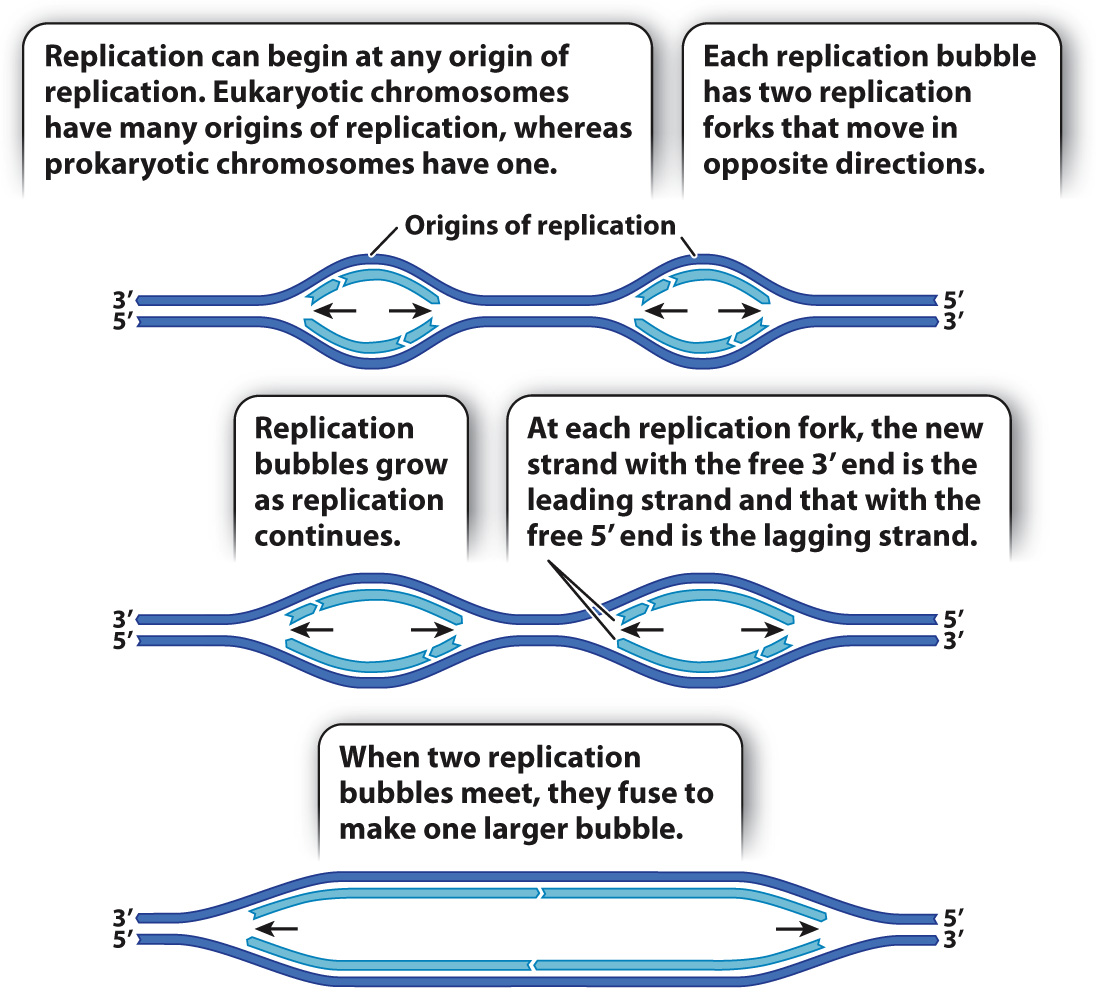Replication of DNA in chromosomes starts at many places almost simultaneously.
DNA replication is relatively slow. In eukaryotes, it occurs at a rate of about 50 nucleotides per second. At this rate, replication from end to end of the DNA molecule in the largest human chromosome would take almost two months. In fact, it takes only a few hours. This fast pace is possible because in a long DNA molecule, replication begins almost simultaneously at many places. Each point at which DNA synthesis is initiated is called an origin of replication. The opening of the double helix at each origin of replication forms a replication bubble with a replication fork on each side, each with a leading strand and a lagging strand with topoisomerase II, helicase, and single-

255
Note in Fig. 12.9 that within a single replication bubble, the same daughter strand is the leading strand at one replication fork and the lagging strand at the other replication fork. This situation results from the fact that the replication forks in each replication bubble move away from each other. When two replication bubbles fuse and the leading strand from one meets the lagging strand from the other, the ends of the strands that meet are joined by DNA ligase, just as happens when the discontinuous fragments within the lagging strand meet (see Fig. 12.6).
Some DNA molecules, including most of the DNA molecules in bacterial cells and the DNA in mitochondria and chloroplasts (Chapter 3) are small circles, not long linear molecules. Such circular DNA molecules typically have only one origin of replication (Fig. 12.10). Replication takes place at both replication forks, and the replication forks proceed in opposite directions around the circle until they meet and fuse on the opposite side, completing one round of replication.
